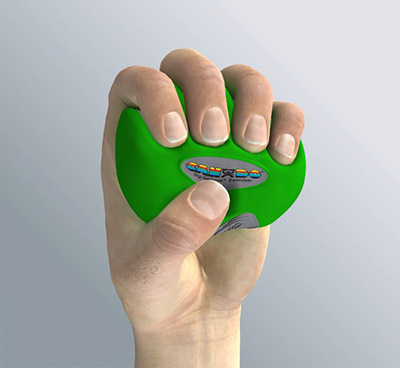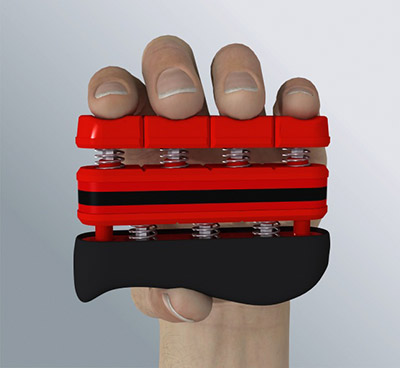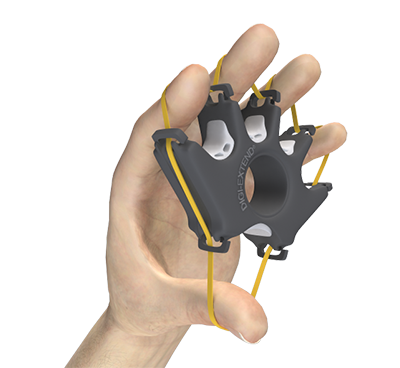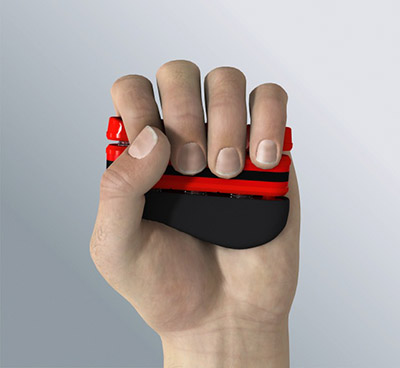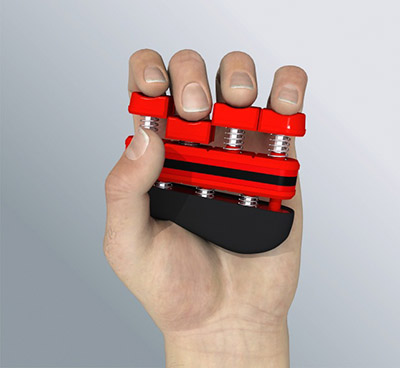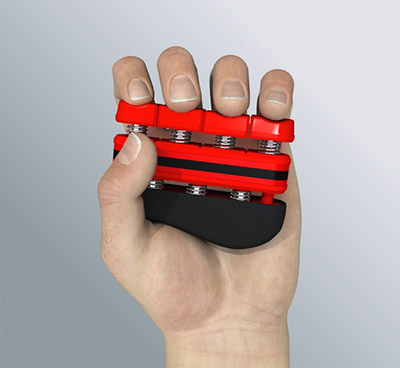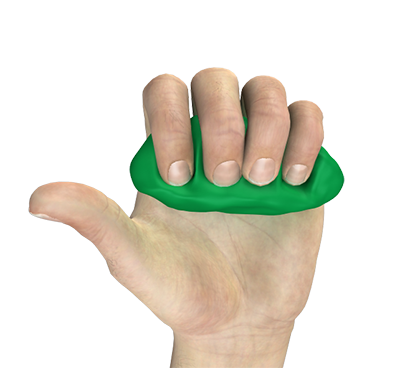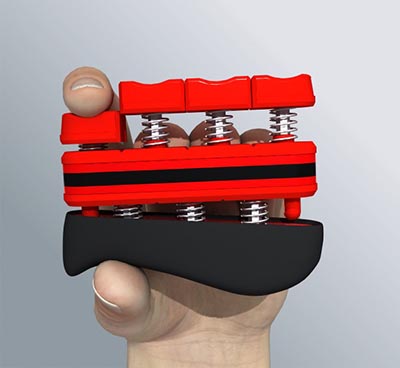26 Exercises (listed below)
-
USING FINGER EXERCISER
- Hook
- Hook Individual Finger
- Gross Grasp
- Finger Tip Flexion
- Trigger Pinch
- Tip to Tip 2-Point
- Tip to Tip 3-Point
- Key Pinch Bent Thumb
- Key Pinch Straight Thumb
- Finger Grip
- Hand Flexion
- Finger Pinch
- Thumb Press
- Thumb Pinch
- Thumb Adduction
- Finger to Rim
- Finger Extension
- Two Hand Web Opposition
- Thumb to Rim Opposition
- Thumb Rim Adduction
- Finger Adduction
- Finger Abduction
- All Finger Extension
- Isolated Finger Extension
- Proximal Phalanx Extension
- Ball Squeeze
(Digi-Flex recommended)
USING PUTTY:
USING POWER WEB:
USING FINGER EXTENSION
(Digi-Extend recommended)
USING SQUEEZE BALL
(Digi-Squeeze recommended)
Hand Injuries
The below is a summary of information from the internet. We make no claims as to the accuracy. You should consult a Physician before performing any exercises.
Hand injuries can result from excessive use, degenerative disorders, or trauma. The hand is a very complex organ with multiple joints, different types of ligaments, tendons and nerves. Trauma to the hand, wrist, thumb, or finger is quite common in society, but many people never seek treatment. Any injury to the underlying structures of the hand carries the potential for serious handicap. Delaying the diagnosis and treatment may result in long-term problems or even a permanent disability.

The hand consists of 27 bones (including the 8 bones of the wrist). When the other associated structures (nerves, arteries, veins, muscles, tendons, ligaments, joint cartilage, and fingernails) are considered, the potential for a variety of injuries exists when trauma involves the hand.
Hand injuries account for nearly 10% of hospital emergency department visits. A series of 1,000 consecutive hand injuries showed the following distribution: 42% lacerations (cuts), 27% contusions (bruises), 17% fractures (broken bones), and 5% infections. Hand injuries account for about 17% all workday loss injuries. The most common cause of the injuries was blunt trauma (50%) followed by injury from a sharp object (25%).
Hand injuries and conditions—from injuries to carpal tunnel syndrome to rheumatoid arthritis—can be mildly irritating or severely debilitating. Whether mild or severe, they often inhibit a person's ability to live his or her life fully. Even minor injuries should be seen by a Physician as soon as possible.



